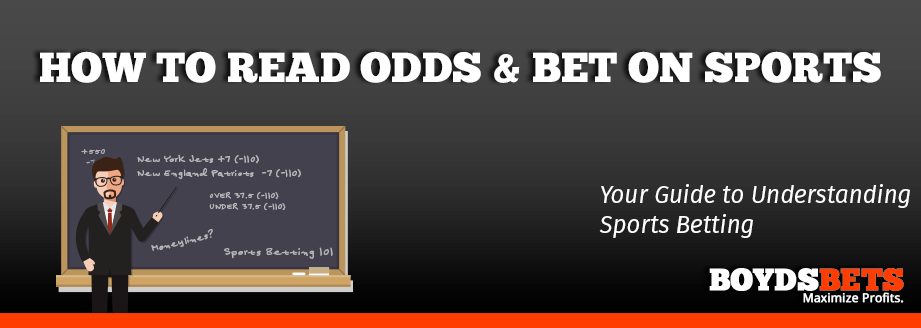How Do Football Spreads Work
Posted By admin On 03/08/22- College Football Spread Lines
- How Do College Football Lines Work
- How Do Football Point Spreads Work
- How Do Football Lines Work
A team favored by -7 must win the game by eight or more points to win the bet. If the team wins by seven, the result is a “push” and the bet is refunded. A spread of +7 means the team must win the game or lose by fewer than seven points to win the bet. A loss by seven would result in a push. By utilizing odds in various ways bookmakers are attempting to get an equal number of wagers on each team. In doing so, they are able to ensure that they make cash no matter who wins. When reading college football odds, the first thing you will see on the left is the time and date of the game.
Easily the most popular type of betting for NFL football is “spread” betting or more commonly known as betting against the spread. Bettors who are new to NFL betting or betting in general may be a little confused with NFL spread betting, but it is pretty easy to understand once it is explained to you. We will explain what betting against the spread means below.
What is Betting Against The Spread?
For each NFL game the oddsmakers set a number of points in which the favored team is favored by. Bettors can then either choose for the favored team to win by more than the number of points set, or bet on the underdogs to lose by less than the number of points they are underdogs by or win the game straight up. For example, the spread could be set on the favored team at 6.5 points. This would mean in order for a bet on the favored team on the spread to win they would need to win by more than 6.5 points (7 or more) in order to win the bet. It also means that a bet on the underdog team would win if the underdogs lost by less than 6.5 points (6 or less) or won the game outright.
Example of NFL Spread Bet

Below is an example of what NFL spread betting would look like:
Matchup
- TeamsSpread
- Dallas Cowboys -2.5
- New York Giants +2-5
The negative (-) sign indicates that the Cowboys are the favorites, while the positive (+) sign indicates that the New York Giants are the underdogs. With the spread set at 2.5 points, a bet on the Cowboys would mean that they would have to win by more than 2.5 points (3 or more) in order for you to win that bet. A bet on New York would mean that the Giants would have to either lose by 2.5 or less points (2 or less) or win the game outright in order for your bet to win.
Here is another example with a screenshot taken from 5Dimes.eu during Week 3 of the 2013 NFL season:

Here you can see that the Rams are +3.5, while the Cowboys are -3.5. So for this example the Cowboys are 3.5 point favorites, while the Rams are underdogs of 3.5 points. If you were to bet on St Louis you would need them to lose by 3 or fewer points or just win the game outright. If you were to bet on Dallas you would need the Cowboys to win by 4 or more points.
If the Cowboys were to win by 3 points, lets say 30-27, any bets on the Rams +3.5 would win. Even though the Rams didn’t win the game they covered the spread of 3.5 points.
Now if the Cowboys were to win by 4 points, lets say 31-27, the Cowboys have covered the spread and anyone who wagered on Dallas would win their bets.
Other NFL Spread Betting Information
You may often notice that the spread is sometimes set at an even number such as 3, 6 , 10, etc. In this case if the favored team won by the exact amount set for the spread the bet would be pushed, and all bets would be returned. For example, if the Patriots were 3 point favorites and they won by a FG (3 points) than this would results in a push, meaning no matter which side you bet on you would get your money returned to you.
The most common NFL spreads are usually set between about 2.5-10.5 points, but you will also almost always have games each week with spreads lower than 2.5 and higher than 10.5. In the event that the oddsmakers feel the game doesn’t need a spread, it would be set at 0 or what some call a pick’em (both teams are given even odds to win for this type of bet).

The odds given on the spread are usually -110 unless otherwise noted. It is not uncommon to see one side of the spread being -105, with the other side being -115. If you don’t see any odds listed for each side of NFL spreads you are supposed to assume the odds are -110 on each. Not sure how to read NFL betting odds? Check out our Sports Betting Odds guide.
Now that you know the basics of NFL spread betting you’ll want to check out our Sports Betting Strategy guide which has some great NFL strategy articles written by a professional bettor.
How College Football Odds Work: Lines, Point Spreads and Over/Unders
If you’re going to bet on college football odds, it’s essential to understand each aspect of odds listing, including the rotation number, point spread, moneyline and over/under. You’ll often find different terms used to describe these with the rotation number called the number, point spread shortened to spread, moneyline to line and over/under simply called the total. These are all lumped together under the term odds.
Odds are basically a way of leveling the playing field and in college football due to the fact that there are hundreds of mismatches per year the field really does need to be leveled. By utilizing odds in various ways bookmakers are attempting to get an equal number of wagers on each team. In doing so, they are able to ensure that they make cash no matter who wins.
College Football Spread Lines
When reading college football odds, the first thing you will see on the left is the time and date of the game. Next, you’ll see two numbers and the team names. Each team is assigned a rotation number. These numbers are standard on all sportsbooks and do a few things. First, it creates a certain order for the games as each matchup is listed in numerical order. The other thing the number does is it allows bettors to refer to the game and team without having to mention the team name or anything else.
| Date/Time | Rotation Number | Team | Point Spread | MoneyLine | Total |
| Oct 2nd | 109 | Ohio State | -7.5 | -360 | 41 |
| 7:00 | 110 | Wisconsin | +7.5 | +280 | 41 |

Let’s say on a matchup between Ohio State and Wisconsin. If Wisconsin is the home team, the Buckeyes are listed first and given the number 109, then the Badgers would be listed second and would be 110. When placing a bet over the phone or at a land-based sportsbook you simply need to mention the team’s number.
After the teams, the various odds are listed. First will be the point spread. There may or may not be a moneyline, as sometimes a book will list these separately and finally the over/under is given.
The point spread will list one team in the negative and the other in the positive. (Unless neither team is favored, then they will be listed as EVEN or PICK). The club posted in the negative with a minus sign is favored and so the bookies take points away from them, which means that team must win by at least a certain number of points to cover the spread. The underdog will have a plus sign and will cover if they win outright or lose by less than the posted number.
This game may have Ohio State at -7.5 and Wisconsin at +7.5. If you bet on Ohio State at -7.5, which makes them the favorite, they must win by 8 or more for you to collect your winnings. On the other hand when wagering on Wisconsin, the dog in this point spread, the Badgers will pay off if they lose by less than 8 or win outright.
How Do College Football Lines Work
Sometimes you’ll find a spread listed as a whole number. Decimals or fractions are often used and do prevent ties but if in our example the spread was set at 7 with the Buckeyes being the favorite and they win by 7, then the game is a tie. That’s called a push. The result of a push is all bets are off and all money wagered is returned.
Although the odds on a spread bet are often listed as being even at 1:1, the fact is they are 0.90:1, which is a bit less than even. How does this work? Often in the point spread you’ll see next to each spread number -110. This tells you how much you have to wager to make $100. Thus, with the point spread -100 will always be listed, which means if someone wagers $110, they will make a $100 profit if they win. (If betting $11.00, the payout would be $10.00)
The moneyline works differently. With this type of wager whichever team wins outright pays off. There is no spread. How does the line work? The favorite is listed with a minus sign and a number. That number is the amount of cash that must be bet in order to win $100. The underdog is posted with a plus sign in front of a number. The number is how much a sports bettor wins on a $100 wager.
Taking the same matchup and odds, Ohio State would be listed at -360 and Wisconsin at +280. To take the Buckeyes, who are favored, a bettor would wager $360 to win $100. On the other hand when taking the dog, which in this case is Wisconsin, $100 is bet to win $280.
How Do Football Point Spreads Work
If Ohio State won and you bet to win $100 on the Buckeyes you would receive $100 plus your original stake of $360 returned back to you. Conversely if you laid $100 on Wisconsin and the Badgers pulled the upset you would receive $280 plus the $100 back that you used to place the bet.
There is a correlation between the point spread and the moneyline. You’ll find that these vary a bit from book to book and will move depending on the amount of action a book receives on the spread or moneyline, but they basically work like this:
| Point Spread | Money Line |
| -1 | -120/+100 |
| -2 | -130/+110 |
| -2.5 | -140/+120 |
| -3 | -155/+135 |
| -3.5 | -175/+155 |
| -4 | -200/+170 |
| -4.5 | -220/+180 |
| -5/-5.5 | -240/+190 |
| -6 | -270/+210 |
| -6.5 | -300/+220 |
| -7 | -330/+250 |
| -7.5/-8/-8.5 | -360/+280 |
| -9/-9.5 | -400/+300 |
| -10 | -450/+325 |
How Do Football Lines Work
The final type of bet you’ll find listed when looking at standard college football odds is the over/under. This is a projection of the total number of points that may be scored. It is usually listed as a fraction with the stake listed as it is in the spread (-110).
With the over/under or total, bets are being made on what the total score may be. In our example which features two solid defenses and good offenses, the total might be around 41. If OSU scores 24 and Wisconsin 20, the total would be 44 or over the 41. If the Buckeyes scored 21 and the Badgers 14, then the total would be 35 so the under would win. Once again sometimes, if the total is a whole number, the result may be a push. That results in all bets simply being returned.
Once you understand how odds in college football are expressed, you can use them to start to determine where your money should go. Be sure to see our college football odds page that connects you with the top sportsbooks on the Internet. The odds makers are trying to even out all bets. Your job is to determine on which side of the point spread, line or over/under it goes.